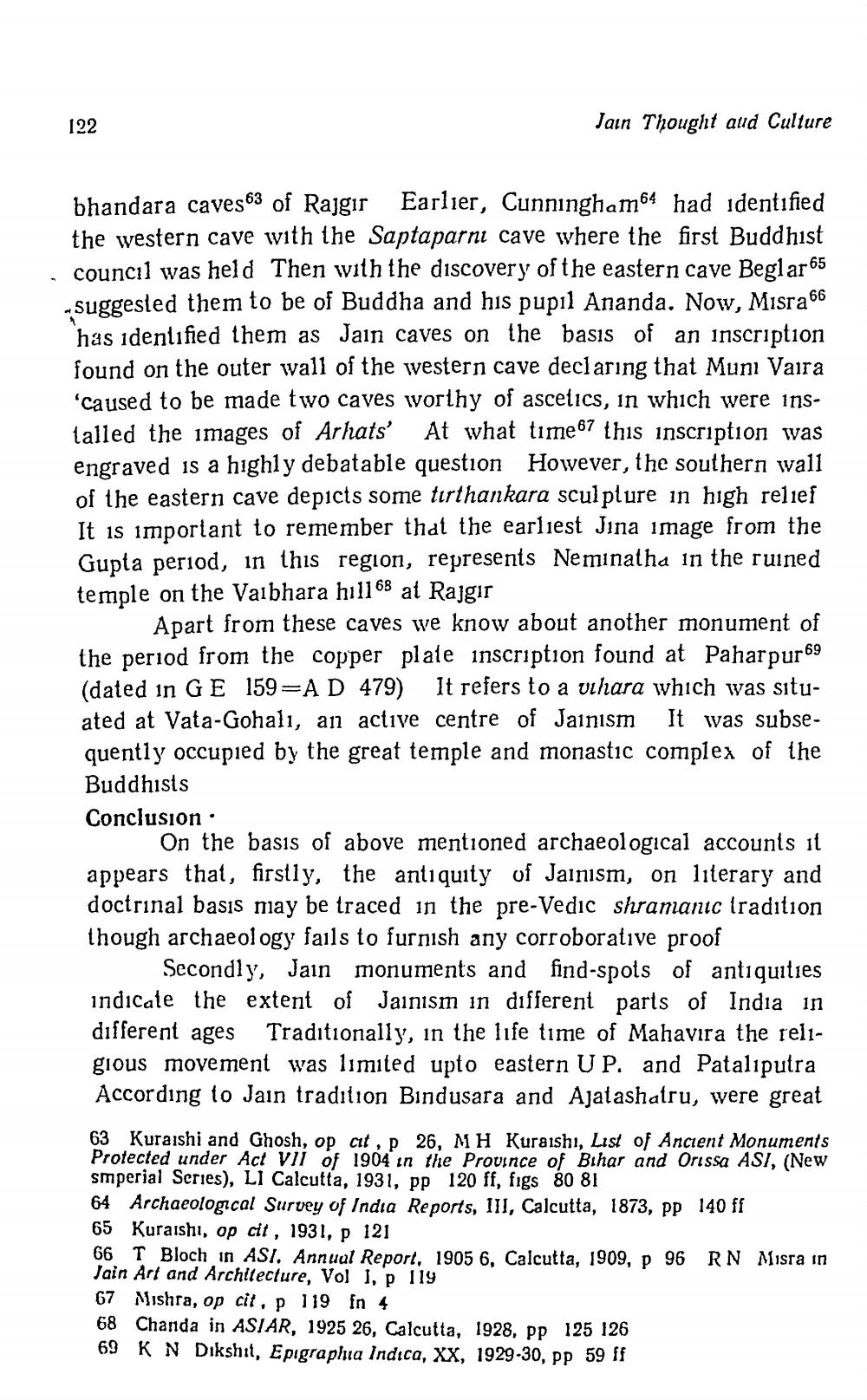________________
122
Jain Thought and Culture
bhandara caves 63 of Rajgir Earlier, Cunningham64 had identified the western cave with the Saptaparnı cave where the first Buddhist council was held Then with the discovery of the eastern cave Beglar 65 suggested them to be of Buddha and his pupil Ananda. Now, Misra 66 has identified them as Jain caves on the basis of an inscription found on the outer wall of the western cave declaring that Muni Vaira 'caused to be made two caves worthy of ascetics, in which were installed the images of Arhats' At what time67 this inscription was engraved is a highly debatable question However, the southern wall of the eastern cave depicts some tirthankara sculpture in high relief It is important to remember that the earliest Jina image from the Gupta period, in this region, represents Neminatha in the ruined temple on the Vaibhara hill 68 at Rajgir
Apart from these caves we know about another monument of the period from the copper plate inscription found at Paharpur 69 (dated in G E 159=A D 479) It refers to a vihara which was situated at Vata-Gohalı, an active centre of Jainism It was subsequently occupied by the great temple and monastic complex of the Buddhists Conclusion:
On the basis of above mentioned archaeological accounts it appears that, firstly, the antiquity of Jainism, on literary and doctrinal basis may be traced in the pre-Vedic shramanic tradition though archaeology fails to furnish any corroborative proof
Secondly, Jain monuments and find-spots of antiquities indicate the extent of Jainism in different parts of India in different ages Traditionally, in the life time of Mahavira the religious movement was limited upto eastern UP. and Patalıputra According to Jain tradition Bindusara and Ajatashatru, were great
63 Kuraishi and Ghosh, op cit.D 26. MH Kuraishi, List of Ancient Monuments Protected under Act vil of 1904 in the Province of Bihar and Orissa ASI, (New smperial Series), LI Calcutta, 1931, pp 120 ff, figs 80 81 64 Archaeological Survey of India Reports, III, Calcutta, 1873, pp 140 ff 65 Kuraishi, op cit, 1931, p 121 66 T Bloch in ASI. Annual Report, 1905 6. Calcutta, 1909, p 96 RN Misra in Jain Art and Architecture, Vol 1, p 119 67 Mishra, op cit, p 119 in 4 68 Chanda in ASIAR, 1925 26, Calcutta, 1928, pp 125 126 69 KN Dikshit, Epigraphia Indica, XX, 1929-30, pp 59 ff




